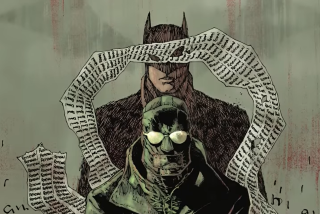Rip Van Winkle Challenges the ‘80s
- Share via
Stephen M. Bingham is a curiosity. Or so one is supposed to conclude after reading the extensive publicity generated by his surrender to authorities following his disappearance nearly 13 years ago. His trial began in San Rafael on Monday.
Bingham, a radical lawyer from a prominent Connecticut family, vanished amid charges that he had helped plot a prison escape attempt by black revolutionary author George Jackson, which resulted in the deaths of Jackson and five others at San Quentin Prison in 1971. Since Bingham’s return, his case has received enormous press attention. But the tone of the coverage reveals more about America’s significant shift in politics and cultural expression than it does about the complexity of the case.
And the case is complex indeed. Controversy surrounds not only Bingham’s role in the bloody riot (did he smuggle the gun into the prison, and, if so, how did he get it past the metal detector?) but also that of prison officials (did they set up Jackson and frame Bingham?). As provocative as these issues are, they have not captured the imagination of the press.
Instead, reporters have been entranced by Bingham’s return after years in the political underground, repeating certain elements of his story so frequently as to establish a caricature: He emerged out of the dim past to face charges that, if irrelevant to the 1980s, hold a certain fascination precisely because of their antiquarian nature. And his story does have its poignant touches. Time and again we hear of his inability to attend his mother’s funeral in 1981. Marked by lost opportunities, both professional and personal, Bingham, 43, is, as one magazine headline put it, a “prisoner of the times.”
In fact, the prevailing sentiment is that he is out of his time, and consequently has emerged as nothing less than a modern Rip Van Winkle. Bingham’s appearance has provoked as much comment as did Rip Van Winkle’s after his 20-year slumber. The former radical’s much-noticed graying hair, like Rip’s “foot-long gray beard,” dates him and sets him apart.
Bingham, we are told, seems uncomfortable in his pinstripe suit, just as Rip’s “uncouth dress” bespoke a man out of place. Even the tenor of Bingham’s voice has been analyzed; it is frequently characterized as an “oddly high voice that is on the verge of cracking,” suggesting that Bingham has had as much trouble communicating with the present as Rip had comprehending the “Babylonish jargon” around him.
But the perception of oddness is something that the press has projected onto Bingham; his voice is odd only if the expectation is something else. Why, then, describe him as if he were in a cultural time warp? The evocation of Rip Van Winkle provides a clue. Just as Washington Irving used Rip in part to mock the befuddled Dutch in an age of Yankee hustle, so Bingham appears as a vivid reminder of the presumed maturation of American political culture since the raucous 1960s.
For some commentators he is a convenient means by which to trash the political recklessness and ideological superficiality of the ‘60s New Left. Others have invested Bingham’s radical past with pathos and nostalgia--sentiments that effectively divest that past of any power and meaning (as the movie “The Big Chill” did to an entire generation). In either case Bingham is perceived as odd so that contemporary political disengagement can be safely construed as normal. He is lost so that we are found.
This image of Bingham cuts both ways, however, as another striking parallel to Irving’s tale reveals. The tranquil Rip, who “would have whistled life away in perfect contentment,” was not simply a vehicle by which to expose Dutch sloth but was a perfect foil to the new American, “busy, bustling and disputatious.” Through Rip, Irving satirized the public postures and the private anxieties of the early Republic.
Stephen Bingham also is a foil. His political commitment to a more radically harmonious society, one dedicated to the creation of a participatory democracy, challenges the politics of quiescence and accommodation that dominate contemporary political discourse. Moreover, the very fact of Bingham’s trial confounds another vital component of modern sensibilities--the sense that there is little relationship between the past and present.
Indeed, the American concept that history can be divided up into discrete, hermetically sealed decades is central to an understanding of why Bingham’s return has been interpreted as it has been. Of course, he has become a displaced Rip Van Winkle. That is the only way to categorize him so that we can maintain the fiction that the past has no existence (or influence) outside the tight confines imposed by the present.
But neither Bingham nor the issues that he has championed can be wished away. And as his trial unfolds it will be a compelling reminder of our continued and fundamental need for social justice and political regeneration, needs that Stephen Bingham and other political activists of the 1960s did so much to bring to our attention.
More to Read
Sign up for Essential California
The most important California stories and recommendations in your inbox every morning.
You may occasionally receive promotional content from the Los Angeles Times.













